| Botanical Name |
|
| Family |
Amaryllidaceae - The amaryllis family. |
| Pronunciation |
|
| Common Name(s) |
English: Shaving Brush plant; White Blood Lily; Powder Puff
IsiXhosa: umathunga; umathuma
|
| Plant Group |
- Bulb / Corm / Rhizome / Tuber / Epigeal bulb Bulbs: are made up of fleshy scales as in an onion
Corm: a short, swollen, underground stem that is hard and not fleshy as in a gladiolus
Tuber: a solid, fleshy, underground, storage organ as in a potato
Rhizome: an underground, horizontal, swollen stem at the base of the plant as in an iris
Epigeal bulb: bulbs that rest above the ground with only the roots anchoring the plant to the earth as in albuca
|
| Plant Size |
- Very Small
| Tree | 3m to 4m |
| Shrub | 25cm to 50cm |
| Perennial/ground cover | Up to 10cm |
| Bulb | 10cm to 20cm |
| Succulent | Up to 5cm |
|
| Position |
- Canopy Shade Canopy shade is found below closely grown trees where some light filters through. Ideal for the protection of herbaceous plants.
- Deep / Full Shade Shade below spreading evergreen trees where sun's rays are unable to penetrate the canopy at any time. For light sensitive plants
- Light or Dappled Shade Found below trees with sparse, open foliage. Ideal for the protection of herbaceous plants.
- Partial Shade The area is in shade for part of the day and in full sun for part of the day.
|
| General Information |
- Attractive fruits, berries or seeds Brightly coloured fruits or berries increase and extend the visual impact of the plant and are especially attractive to birds and other small wildlife.
- Drought Tolerance: Moderate The plant is moderately adapted to arid conditions and can survive short periods of drought and high temperatures without extra water.
- Evergreen Plants that have leaves all year round.
- Frost: Tender A plant that will not survive any frost or low winter temperatures.
- Salt spray tolerant A plant with specific adaptations enabling it to grow in a saline environment.
- Sand tolerant Plants adapted to survive in nutrient poor, very sandy soils.
- Water Moderate These plants will need some extra watering compared to water-wise plants. Plant them together, in at least some shade and in a convenient proximity to the house so that grey water can be utilised during times of drought.
|
| Specific Information |
Haemanthus albiflos is an evergreen species of the Haemanthus family, preferring a shady position. The leaves are quite variable: from pale to dark to grey green in colour, they may be covered with short, soft hairs or smooth and shiny, or may have yellowish spots on the upper surface. In the wild it flowers in autumn and winter but may flower at any time of the year in cultivation. The fruits are in the form of a large berry and ripen to an eye-catching bright orange or red, attractive to birds. Half the bulb is usually exposed above ground and is bright green.
|
| Ad Break |
|
| Flowers |
| Description |
a compact flower head, 30-50 mm wide, with many narrow white flowers, the anthers of which turn bright yellow or orange when ripe
|
| Season |
- Autumn to Winter Plants will seldom bloom for the entire season as given in the list, but should flower during a period within these parameters.
|
| Colour |
|
| Growth Rate |
- Moderate Specifying growth rate can be very misleading as there is considerable variation of growth rate depending on type and species of plant, available water, supplementary feeding, mulching and general care, as well as the plants suitability and adaptability to the garden environment.
|
| Plant Uses |
- Attracts bees, butterflies or other insects This plant attracts insects which can be food for birds or other creatures in your garden.
- Attracts Birds This plant will attract birds.
- Container Trees, shrubs and ornamental species that can adapt to growing in a restricted environment.
- Filler Either a fast growing tree or shrub used temporarily to fill in an area while the permanent plants grow to a desired size, or a plant used to fill gaps in borders or beds.
- Ground Cover Low-lying plants that spread fast, require minimal maintenance, and cover large expanses or bare areas between bulbs or shrubs. They provide protection from erosion and drought and improve the visual appearance of the garden.
- Interplanting Arranging and planting plants in the garden that have different blooming times and habits of growth, extending the amount of time in which the area is in flower.
- Pot Plant A plant that needs a protected environment on a patio or indoors.
- Rock Garden An area constructed of larger rocks, arranged naturally, to emphasise the use of stones as a main element. Generally plants used do not need a lot of care.
- Suitable for coastal gardens Plants adapted to dry, sandy soil, forceful wind, limited rainfall and intense sunlight.
- Suitable for seaside gardens Plants that will survive the hostile environment of harsh salty winds, dry sandy soil, irregular rainfall and heat found in seaside gardens.
- Suitable for smaller gardens Such plants do not have invasive root systems, remain small or controllable and can often be grown in containers.
- Wild Garden An indigenous garden planted for the benefit of wildlife and birds. Provides food, water, a variety of mini-biomes and no poisonous chemicals are used.
|
| Distribution and Habitat |
from the southern Cape, through the Eastern Cape, into KwaZulu-Natal, in deep shade on forest floors, on rocky sea shores exposed to salt spray, in coastal dune forest, on cliff faces in river valleys and in shady places on inland mountain ranges
|
| Planting Suggestions |
This is one of the easiest of all the Haemanthus species to grow. Plant in dappled or full shade and leave undisturbed for many years.
Bulbs can also be planted in reasonably shallow container on a shady verandah or indoors where they should receive dappled light, not direct sunlight. Plants thrive when pot bound and only need to be divided every seven or eight years. Not being hardy, they need the protection of a greenhouse in areas with very cold winter conditions.
Soil should be a rich, well drained loam for best results, but any well-drained soils will do. Add compost and a good layer of mulch or leaf mould.
Offset bulbs with a good supply of roots can be carefully removed in early spring. Replant immediately and keep well shaded.
The leaves may at times be invaded by the lily borer or amaryllis caterpillar. Control by cutting away and destroying the affected leaves, or by spraying with a carbaryl-based insecticide. I have found that slugs and snails are quite partial to the leaves. These can be picked off by hand or controlled with the use of a snail bait.
|
| Medicinal Uses |
Reportedly used in traditional medicine to treat chronic coughs and as a charm to ward off lightning.
|
| Ad Break |
|


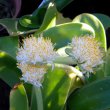
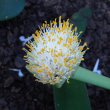
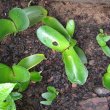
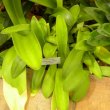
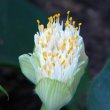


Comments
Haemanthus
Where can it be purchased ? Gave my only plant to someone who desperately wanted one ! HELP ,!
Hi Elfriede
Hi Elfriede
Oh dear. Giving away one's only plant is like lending out a favourite book - not always a good idea. A few nurseries do keep them but as I don't know in which area you live it makes it difficult to find a stockist near you. However, they travel well and can be ordered online from me or any other bulb grower who sells on line.
To order from me, go to the Purchase Online box at the top right hand corner of this page, click, fill in the details and I will send you the pertinent information.
Kind regards
Lorraine
Discuss this plant
Share knowledge, ask a question or give an experience.